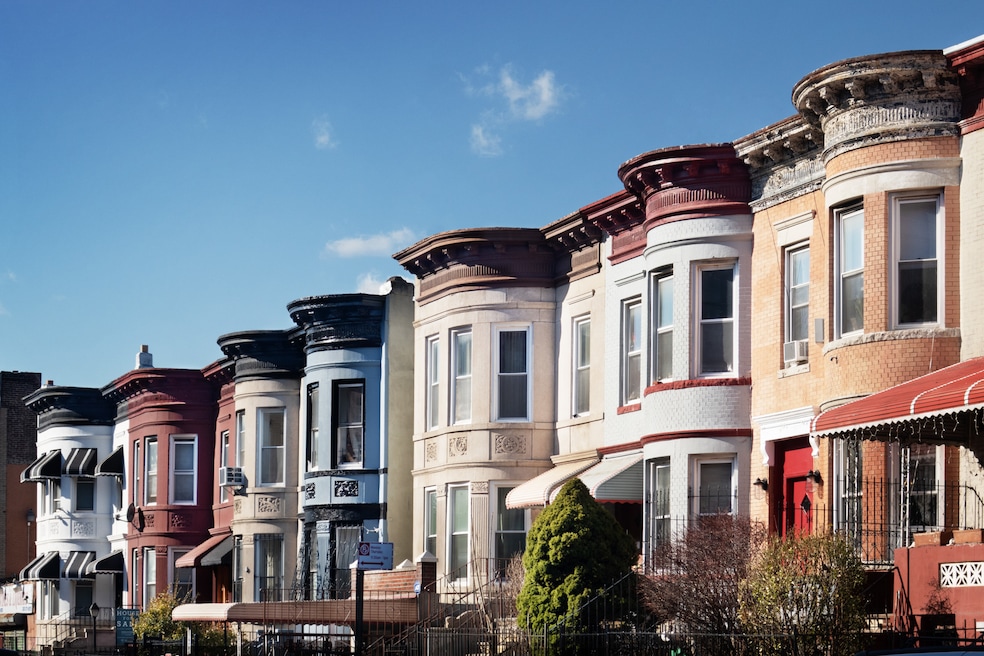Despite prices climbing to record levels, more Americans are finding a way to purchase a home, according to a report the National Association of Realtors released Monday.
But for one particular racial group, the path to homeownership is still a struggle.
The percentage of Americans who own their home grew from 63.5% in 2013 to 65.2% in 2023, with Asian and Hispanic Americans driving most of that growth, the NAR said. Black Americans have not found the same success, however.
"In fact, despite recording the largest year-over-year gains in 2023, Black homeownership remains substantially lower than that of other groups," the NAR said in its report, the 2025 Snapshot of Race and Home Buying in America.
NAR's annual study tracks homebuying activity among each racial group — Asian, Black, Hispanic and White. The study said Asian Americans saw their homeownership rate grow from 68.8% in 2013 to 72.4% in 2023, while Hispanic American homeownership went from 45.2% to 51%. By contrast, the Black homeownership rate is the nation's lowest and has had trouble growing beyond 45% from 2013 to 2023.
NAR also noted that nearly half of all Black homebuyers (49%) were first-time buyers last year. In 2013, 58% of first-time Black homebuyers were first-timers.
“Today’s first-time home buyers continue to face housing affordability and credit-access challenges, but the situation nationwide varies when assessing purchasing power,” Jessica Lautz, NAR's deputy chief economist, said in a statement. “Buyers have always had to consider total home costs — including utilities, insurance and commuting expenses — which are especially important when taking the initial steps into ownership.”
"It's worth noting that even though the gap in homeownership rates between Black and White households showed a decrease in 2023, it still remains higher than it was a decade ago," the study indicated. The gap went from 27% in 2013 to 28% in 2023.
To be clear, Black Americans' homeownership rate has increased between 2013 and 2023 — from 41.9% to 44.7% — but their growth rate is the slowest among all racial groups, NAR said.
Homeownership is lower among Black Americans partially because they still don't have access to homebuyer education, said Akeem Casey, a real estate agent with Perry Homes in Houston, Texas. Some buyers of color, for example, don't consider purchasing a home because they believe they're required to have 20% of the price as a down payment, Casey said.
Buying a home is like a footrace, Casey said, and explaining mortgage applications and how to raise a credit score will help improve homeownership among Black Americans.
"There's still more work to be done at the beginning of the race and instead of the end," he said in an interview.
NAR's study adds to a growing body of industry and academic research suggesting that the lack of Black homeownership is weighing down the U.S. economy. The Urban Institute and the National Association of Real Estate Brokers have also published studies that explain why Black homeownership is stuck.
NAR researchers said there's an exhaustive list of reasons why certain racial groups — particularly Black and Hispanic buyers — have historically had trouble purchasing a home. Black and Hispanic homebuyers have higher denial rates on mortgage applications, and when they do get a loan, it's often Federal Housing Authority financing. Those type of loans "often come with ... additional fees compared to conventional loans," according to the study.
High rental costs have also been a factor for Black and Hispanic buyers, NAR said.
"Specifically, Black and Hispanic renters are more cost-burdened than any other group," the study said. "Over half of these young adults spend more than 30% of their income on rent. This doesn’t allow many to save for a down payment and transition to homeownership."


